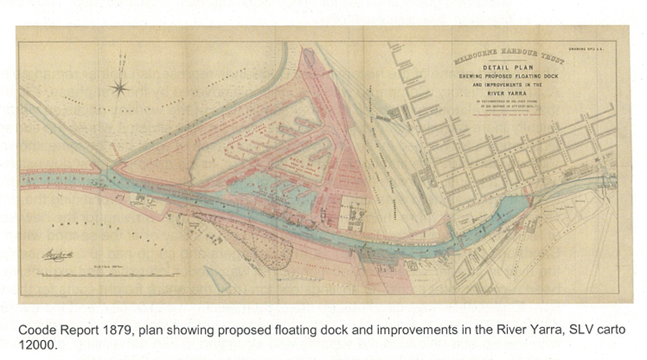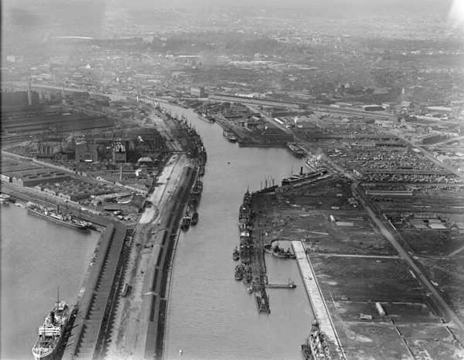
THEN AND NOW
Victoria Harbour Docklands is on the site of the traditional lands of the Kulin Nation, specifically the Woiwurrung (Wurundjeri) and Boonwurrung tribes. This Melbourne city area is overlapping the boundary of the territories of both these tribes.
The Yarra River is very significant in the Docklands history. The people of the Kulin Nation who occupied the lands of the Yarra River and much of Central Victoria are thought to have called the river Birrarung meaning 'ever flowing' or Birrarung Marr meaning 'river of mists and shadows.' Traditional owners also called the river 'Yarro Yarro' meaning 'it flows'. The First Nations people were likely referring to the waterfall - at the site of current Queens Bridge which performed the vital function of holding back the tidal waters of the Bay. It was this waterfall that created the conditions from which people of the Kulin Nation reaped the harvest of both fresh and saltwater environments.
The area now known as Docklands was part of the Lower Yarra Delta and was an important meeting place for tribes of the Kulin Nation, who would come together in large gatherings for trade, celebrations and other social activities. Much of the landscape was swamps and rivers teeming with animals and plants which were important food sources for the First Nations people who hunted, fished and collected plants and birds here and or course the source of drinking water. In this area, aboriginal people used bark for canoes for transport and fishing on the sea, rivers and the wetlands.

As Melbourne began to grow as a base for sheep farming in the district, Aboriginal land was quickly overrun by cattle, which damaged traditional food supplies.
Industrialisation led to the destruction of the marshlands at the confluence of the Yarra and Maribyrnong River in the area now called Docklands. In the early 1850s, Melbourne was in the midst of the gold rush. Victoria Dock (now Victoria Harbour) was created to meet the demands of mass migration.
By 1860, Docklands was home to the West Melbourne gas works, railway industry, an explosives magazine and pottery works. Abattoirs, fellmongeries (dealers in animal skins and hides) and tanneries also set up in the area.
Construction began on Victoria Dock in 1880 and by 1908 it received around 90 per cent of Melbourne’s imports. For more than 50 years it was Melbourne’s most prolific dock, handling cargo including coal, steel, animals, wool and wheat. In the 1960s, new methods of delivering cargo in containers began to render Victoria Dock obsolete.
Today, Victoria Harbour has a very different face but its heritage as a bustling place of trade remains. It has transformed into a lively neighbourhood, where retailers sit alongside large corporate businesses, numerous food and drink outlets and residential properties. It’s a place where work, life, food and culture converge, in the very best way possible.
Lendlease respectfully acknowledges the Traditional Owners of the land, the Boonwurrung and Woiwurrung (Wurundjeri) peoples of the Kulin Nation and pays respect to their Elders, past and present.

